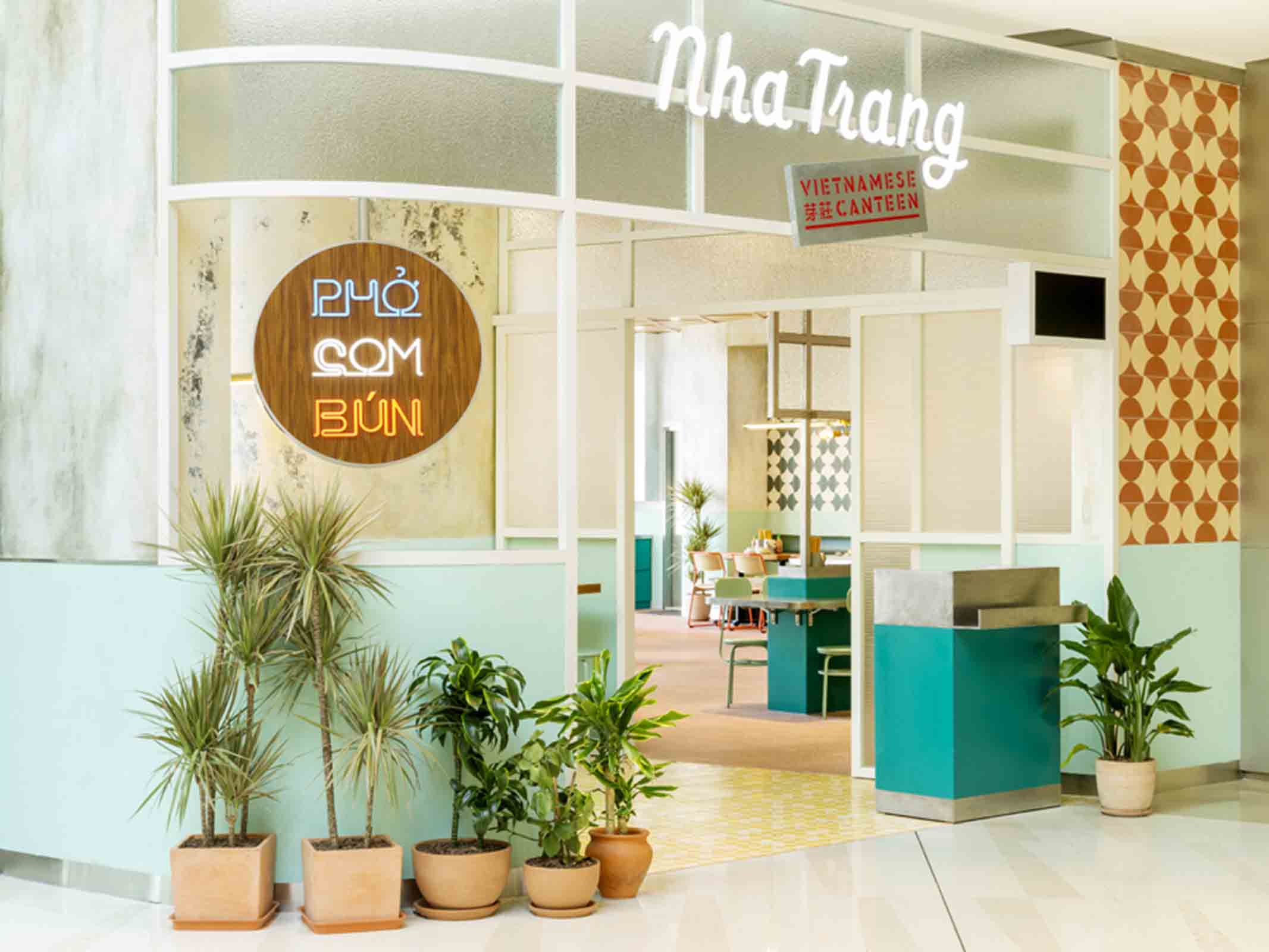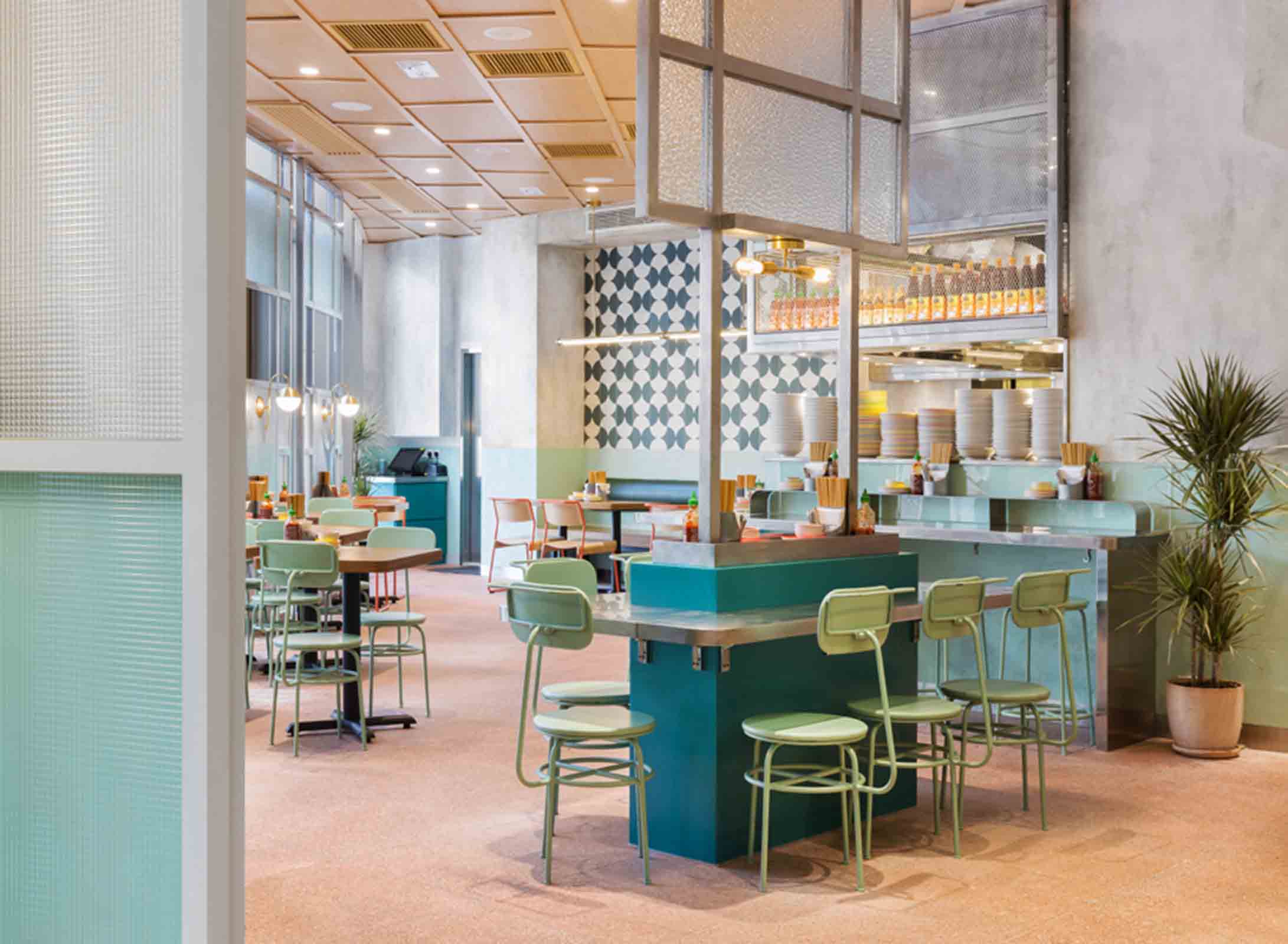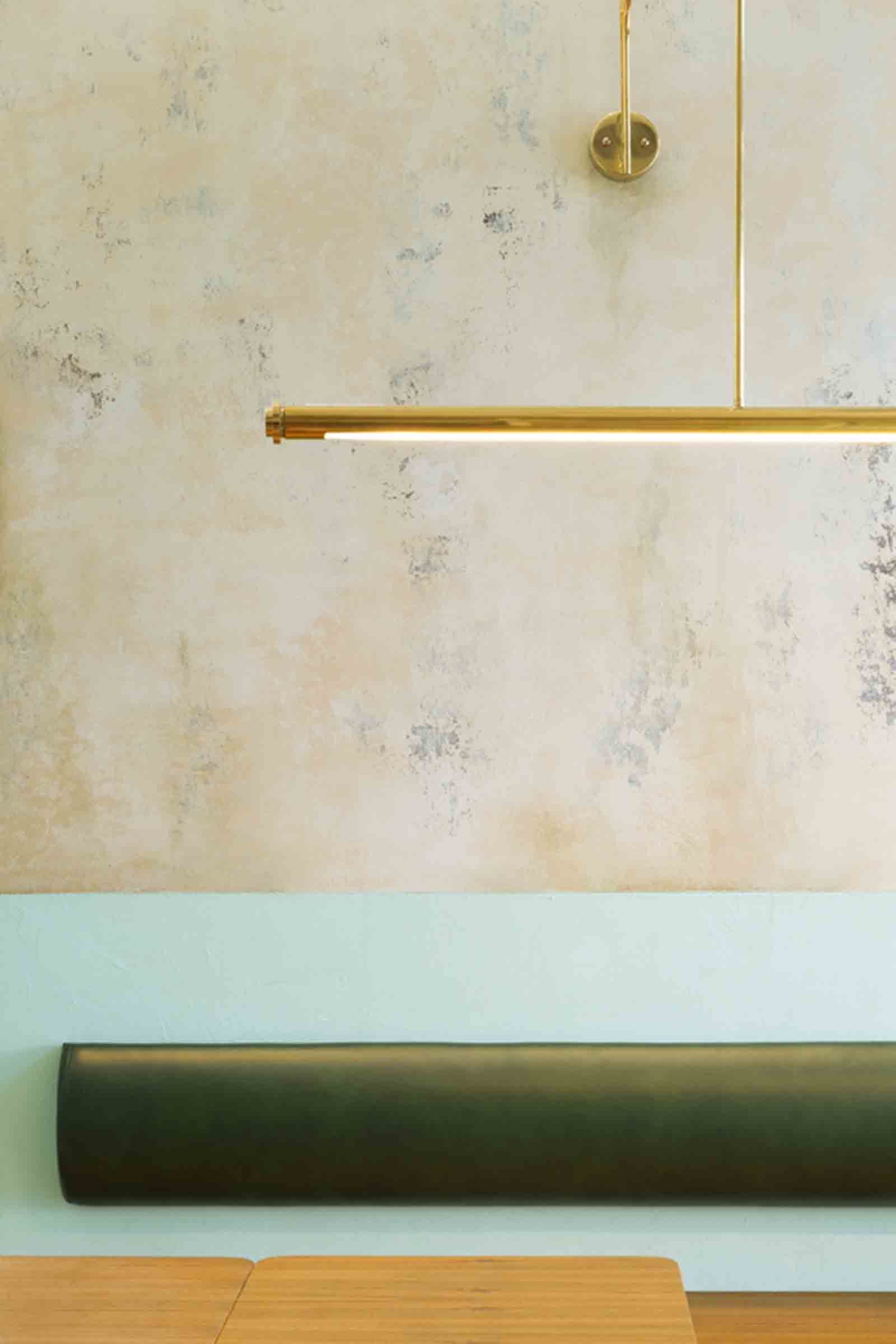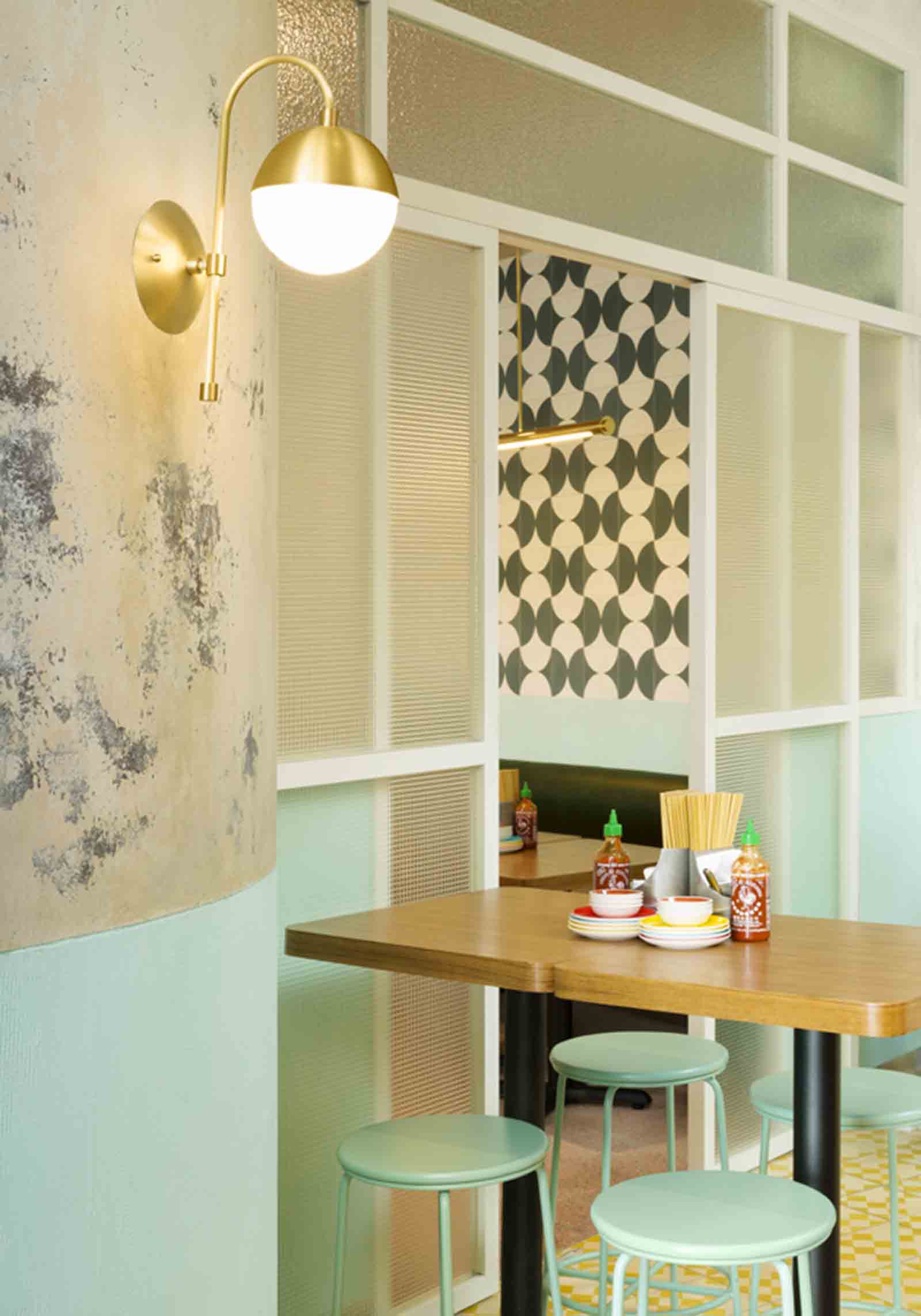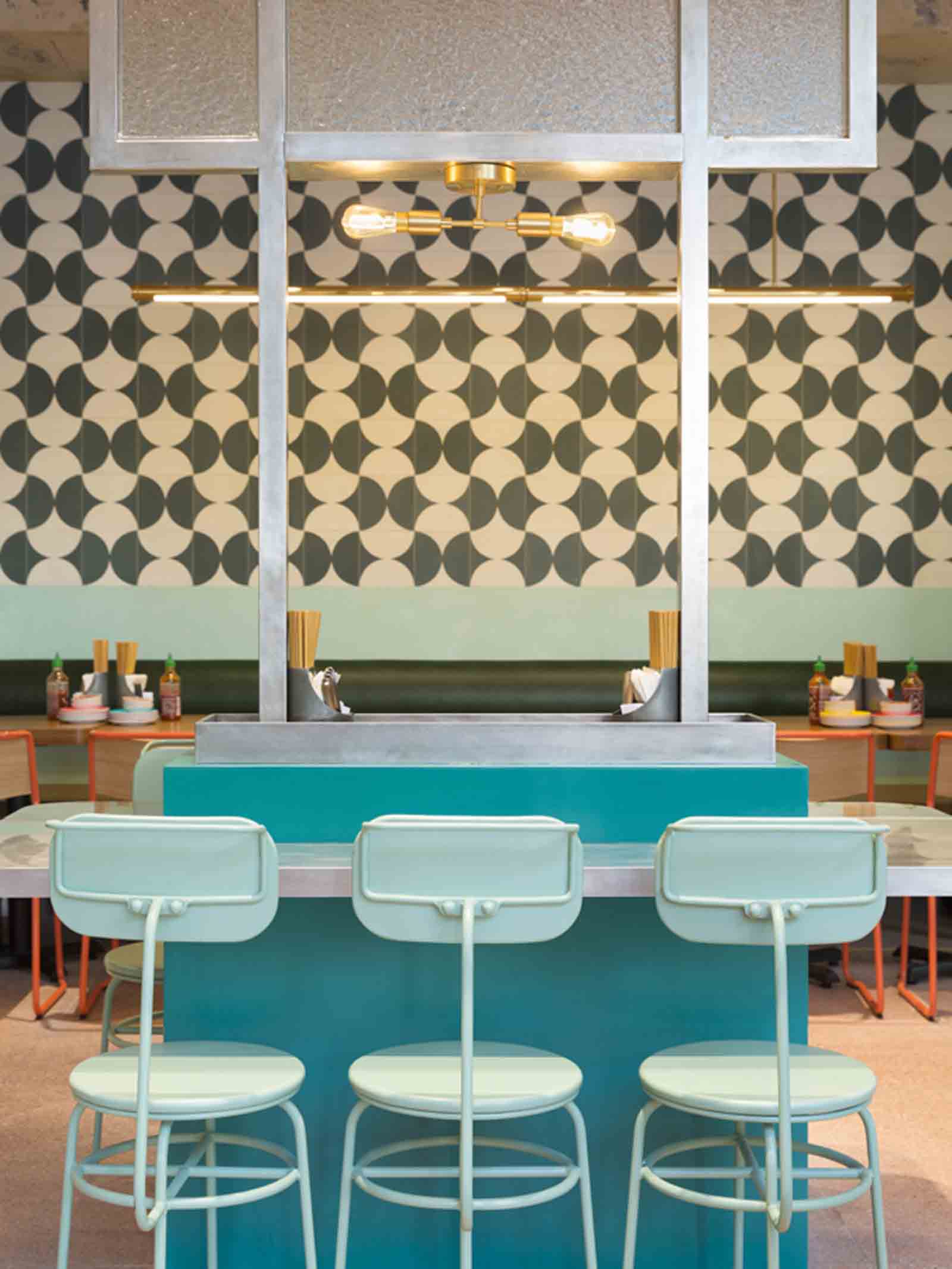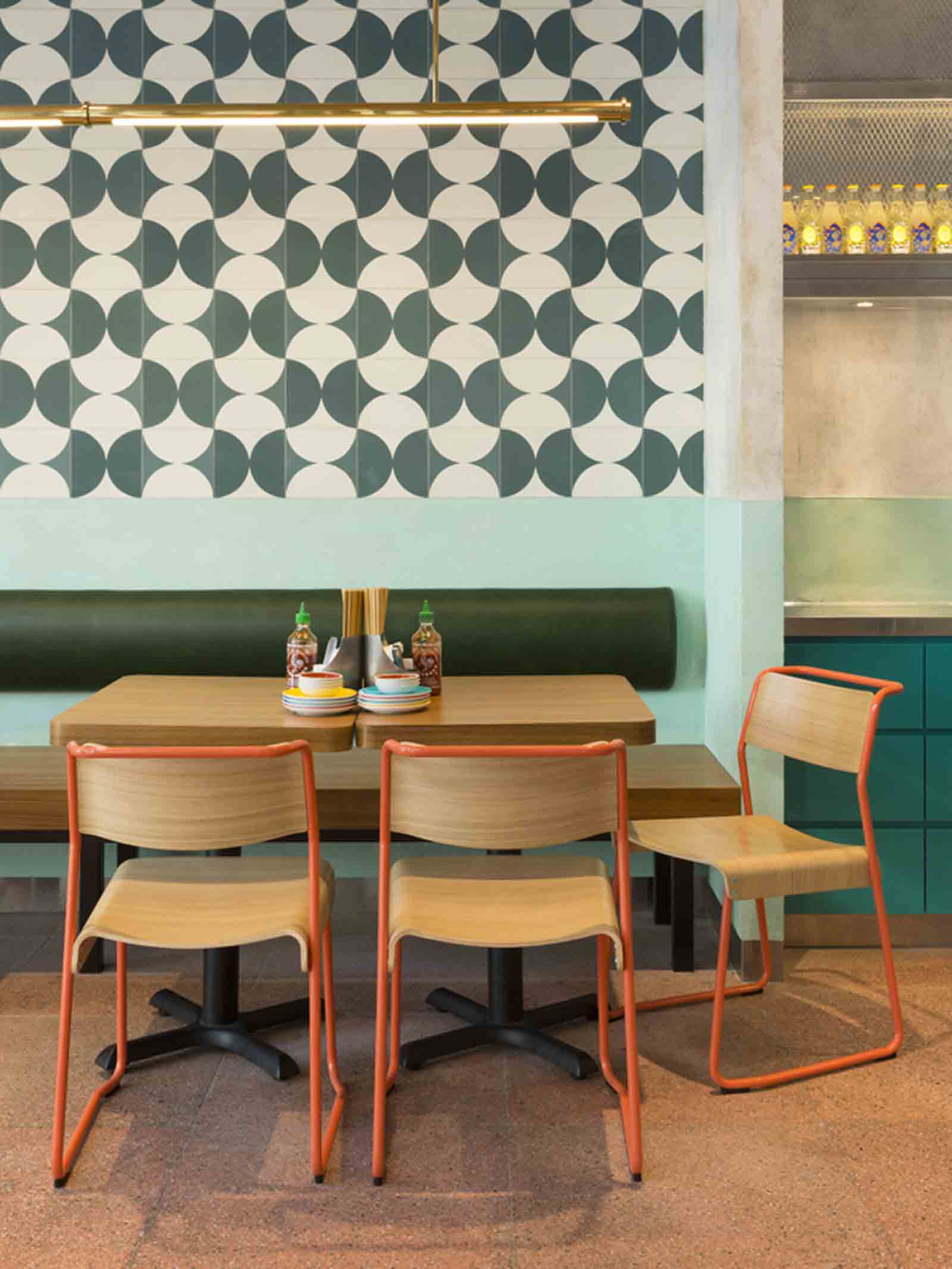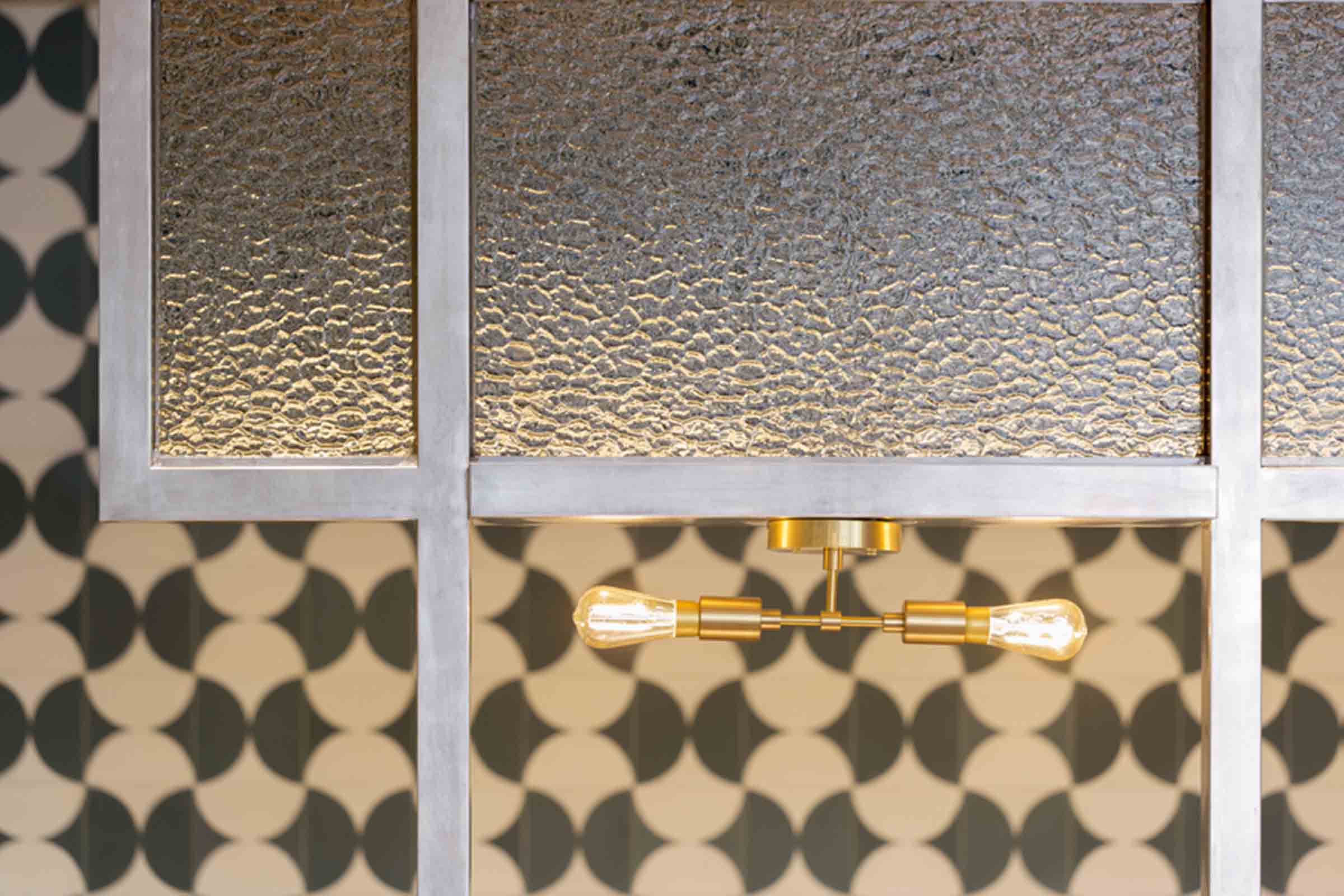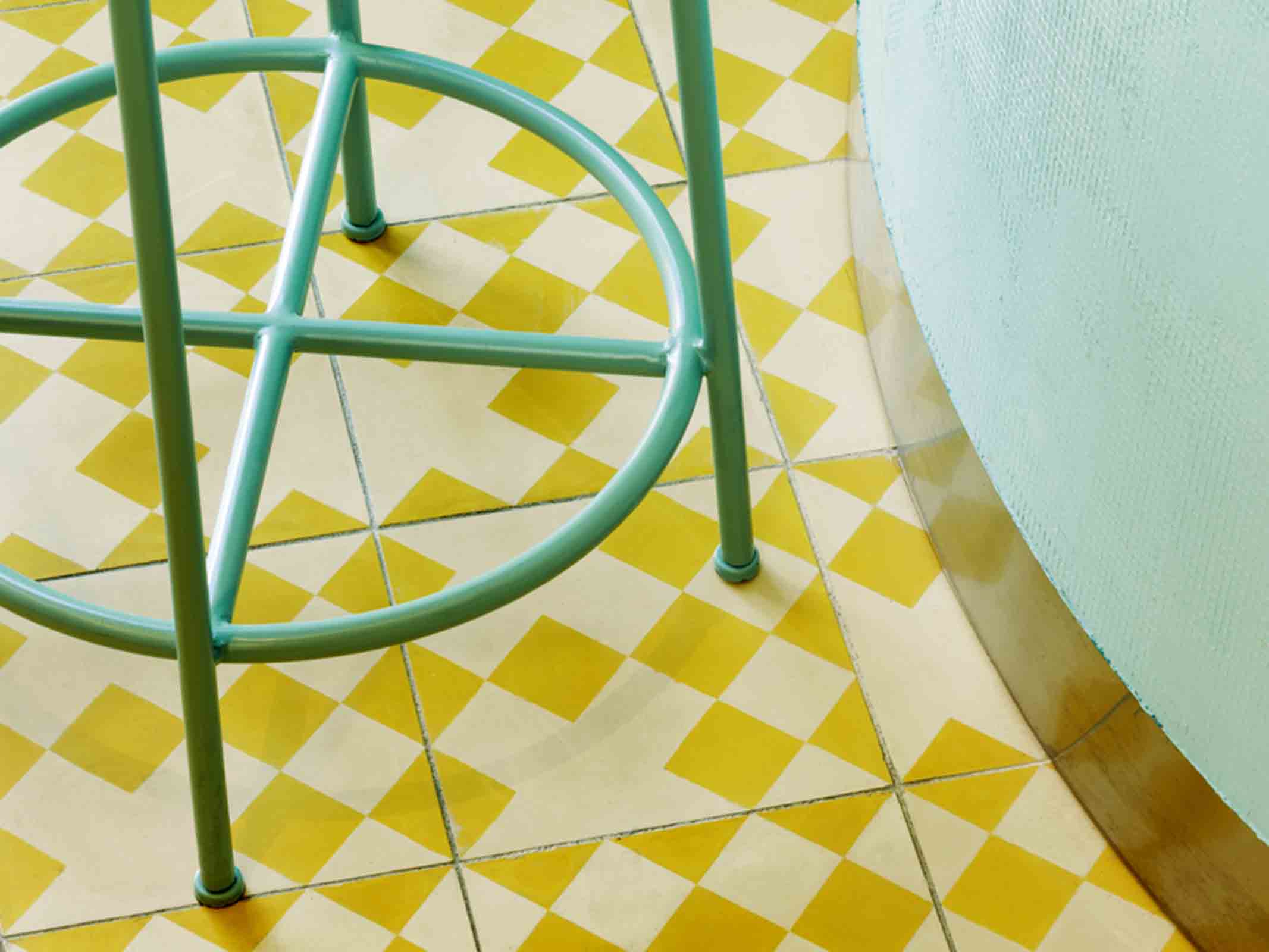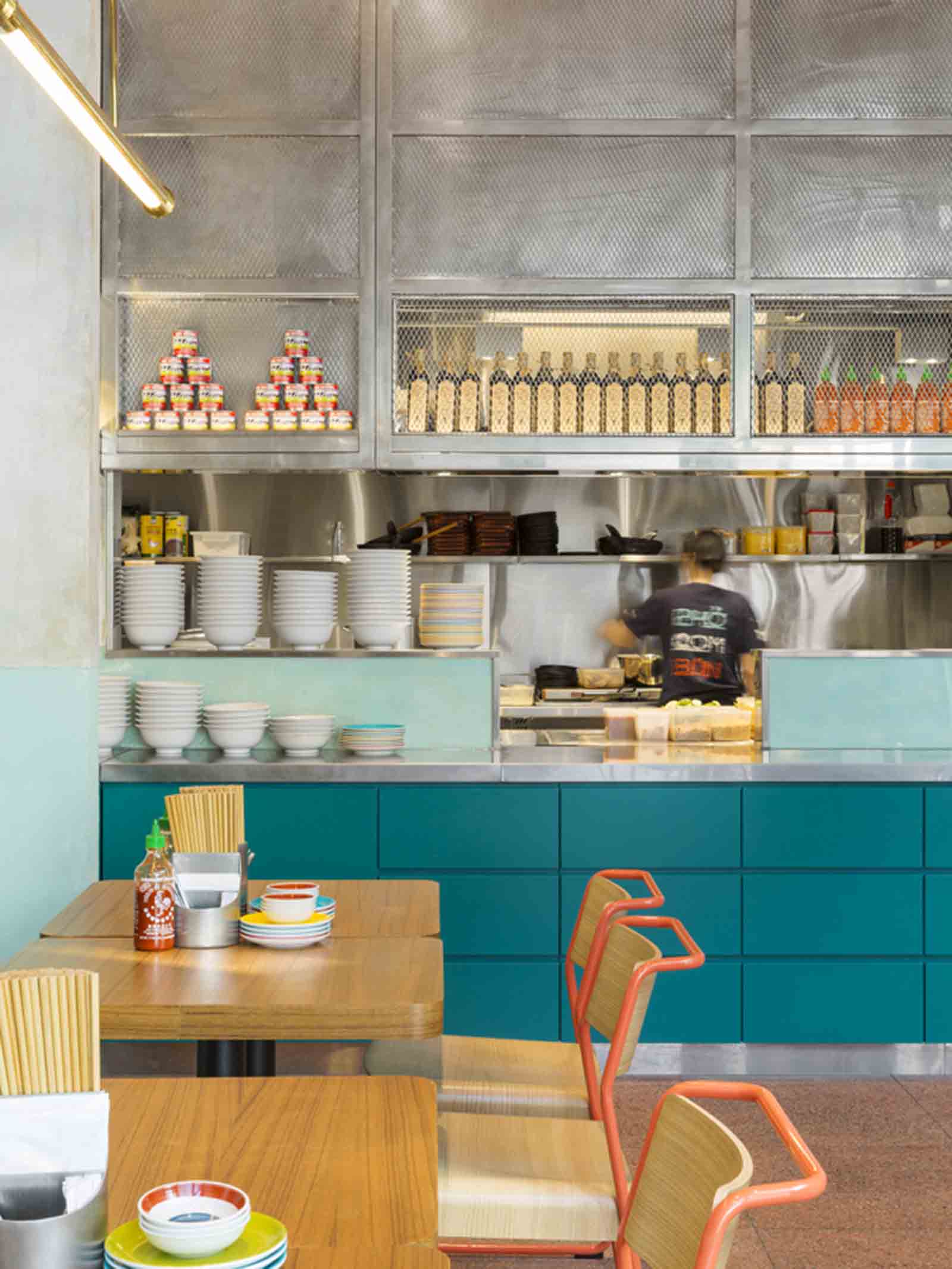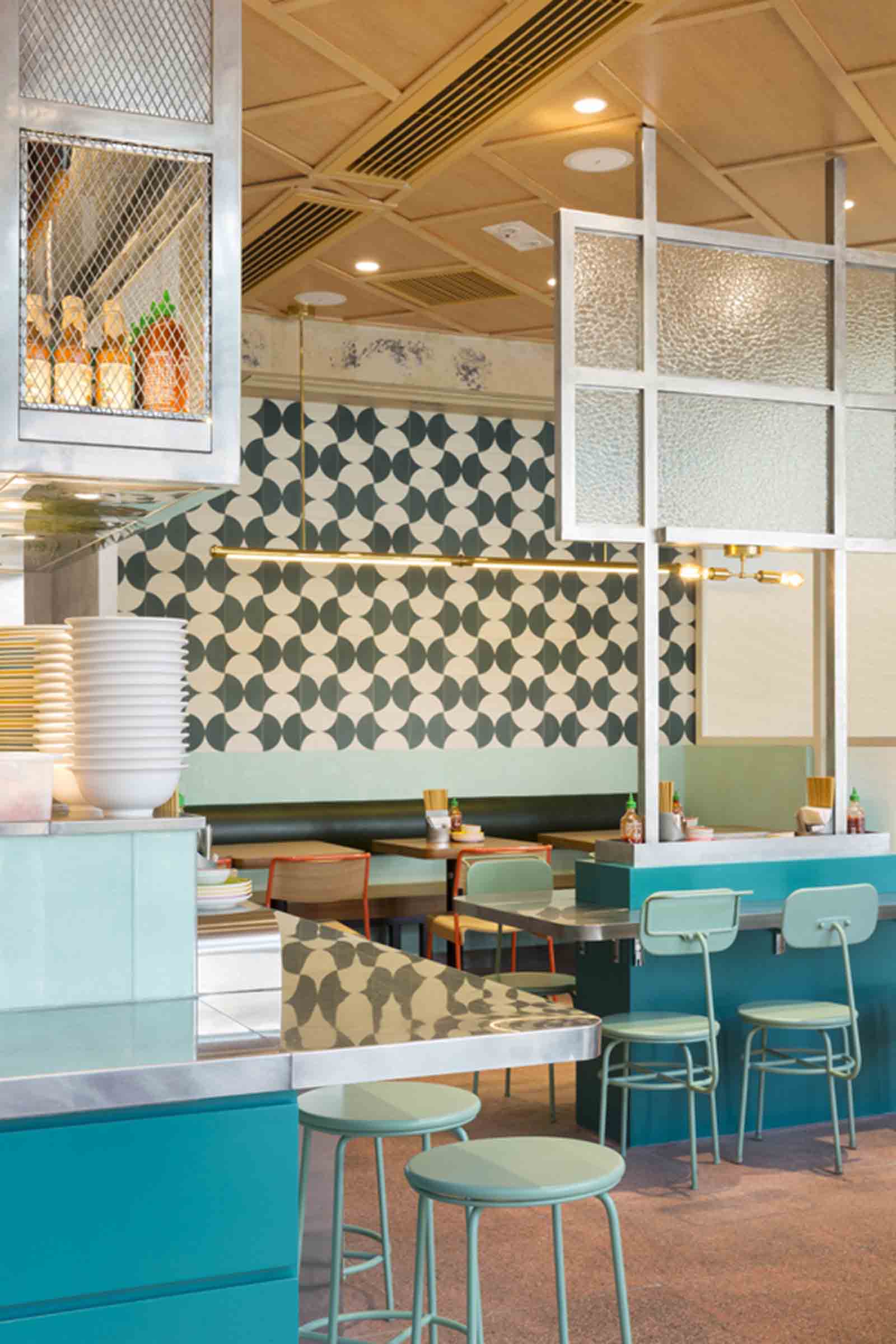Nha Trang

A bit of Indochina charm in Hong Kong
A MTR shopping mall on Hong Kong’s urban fringe is the unexpected location of a new destination eatery that transports diners to the scuttling back laneways of yesteryear Hanoi. Nha Trang Vietnamese Canteen offers a fresh update on Vietnamese street food in a contemporary environment designed by up-and-coming local studio JJA / Bespoke Architecture and led by JJ Acuna. Ever the optimist, Acuna immediately drew a parallel between the shopping mall location and the bustling street scenes of Hanoi. ‘It reminded me of these Indochine-style colonial structures, set within smaller-laned streets that still litter Hanoi’s urban fabric.' To give form to his vision, Acuna developed a design inspired by the environment of Vietnam's domestic shophouses. A timber ceiling design reflects the typical grid layout of residential homes in the region while adding warmth, and at the entrance, space was set aside to act as a forecourt. ‘The courtyard space frames the restaurant interiors, while creating a buffer between the restaurant as home and the mall’s atrium as a busy Hanoi street,’ explains the designer.
Set back from the ‘street’, Nha Trang’s welcoming facade is fronted by spiky plants in terracotta pots and a striking neon sign in Vietnamese script with its characteristic flourishes, announcing menu delights. Just inside, a cheerful courtyard trimmed in seafoam green walls and yellow-patterned tile flooring allows diners a sort-of al fresco experience thanks to an opaque glass surround that floods the space with natural light. Entering the heart of the ‘home’, the underfoot changes to terrazzo, signaling a shift in formality.
Inside, beamish brass lighting elements add a level of intimacy to the main dining area, which still manages to channel the cheery welcome of a colonial-era Indochina shophouse canteen. ‘I wanted to reflect on the state of current Vietnamese architecture that dates from a time a before communism or modernism took hold,’ says Acuna. ‘Today, they are guest houses and casual restaurants for the most part on the ground floor but have been updated for better or worse throughout the twentieth century with pastiche materials that look “western”.’ To replicate these layers of history one might encounter in Hanoi eateries today, Acuna paired striking tile designs by India Mahdavi with distressed wall finishes, where one might imagine layer after layer of propaganda posters have papered the walls over the decades.
‘I love the final effect,’ says Acuna. ‘It looks like a Vietnamese street food restaurant, but the references are so abstracted that it stands on its own in today’s day — not a Disneyified version of what it could have been.’
Text / Jessica Vahrenkamp
Images / Adam Kuehl

